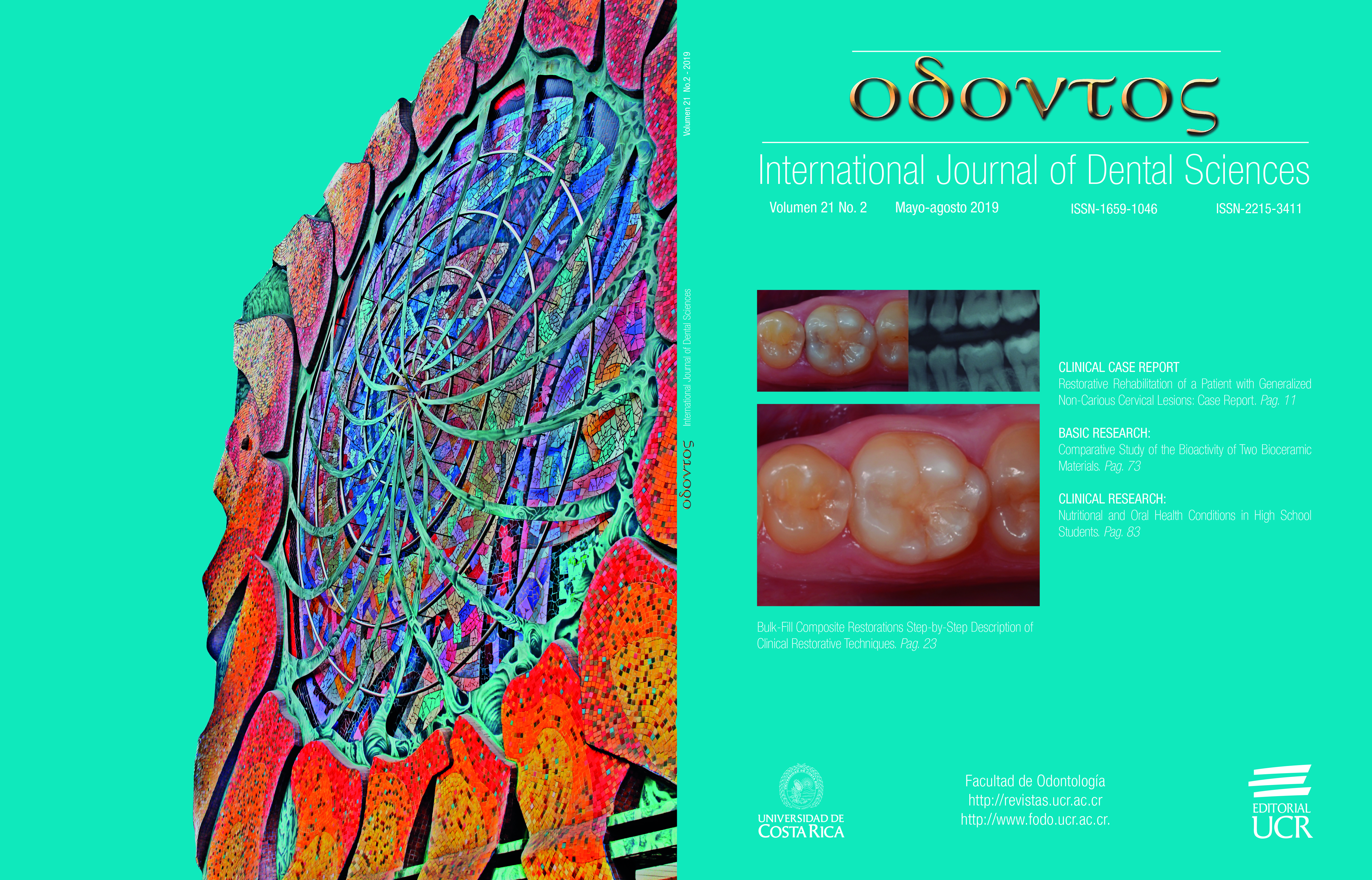Abstract
The purpose of this preliminary study is to evaluate the push-out bond strength (PBS) of experimental dentin posts (EDPs) obtained from human and bovine teeth sterilized by autoclaving and gamma radiation. Eighty-four mandibulary premolars were obturated and divided into three post groups: the glass fiber group (Fb) human EDP group (Hm) and the bovine EDP group (Bv). Three subgroups (n=12) were obtained for each EDP groups according to the sterilization methods; no sterilization (Cnt), steam autoclaving (Aut), and gamma radiation (Rad) a total dose of 25 kGy. All posts were cemented to root canals using a dual cured resin cement (Panavia SA). After the micro slices (1mm in thickness) were obtained of each subgroup, PBS test was performed. Data were analyzed using two-way ANOVA and Tukey’s multiple comparison tests (α=.05). The post type and sterilization method was significantly effective on the PBS values according to the ANOVA (P<.001). No sterilization apllied EDP groups showed significantly higher PBS values than the sterilized groups (P<.001). Bv_Cnt (9.42 ±1.31) showed significantly lower PBS values than both Fb (12.36 ±1.54) and Hm_Cnt (11.06 ±1.38) groups (P<.001). Both steam autoclaving and gamma radiation affect the PBS values and fracture modes of EDPs negatively. The bovine EDPs are not as effective as human EDPs with regard to the PBS to the root dentin.

